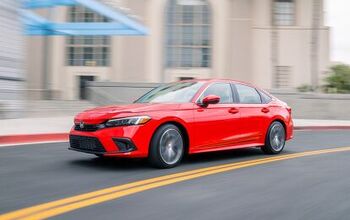Awaiting the Flood: Cadillac's First EV Draws Closer

With a brace of sedans not arriving until later in the year, Cadillac’s big attention-getter last January was a gas-free, unnamed crossover… as well as a conventional one with little charisma in the tank.
The concept EV heralded an electrified product surge from General Motors as well as the Cadillac brand, but in the 10 months since its reveal, little has been heard of the future model. Expect to hear a lot more in the New Year, as the vehicle’s debut is barely more than a year away. It’s the first of many fingers-crossed products from GM.
Speaking to The Detroit Bureau, Rick Spina, GM’s vice president of electric and autonomous vehicle programs, claims the model will appear in a little over a year. While that would normally point to a debut at the Detroit Auto Show, organizers behind that even have left winter in the dust, preferring instead on a June date. Regardless, expect to see the Caddy show itself in early 2021. Sales should commence later that year.
Just in time, it seems, to do battle against a Lincoln crossover that borrows the in-house EV platform found beneath the Ford Mustang Mach-E. Like whatever Lincoln comes up with, the Cadillac model will boast two rows of seating and a premium — but athletic — persona. Other GM models bound for the platform will carry their own personality. And there will be a number of them, Spina claims.
“A fairly large chunk of our products in the next three to seven years will be electric vehicles,” Spina said. “GM is traditionally a full-line company, so we’re going to compete everywhere.”
There’s two things behind the automaker’s sudden EV product push. First, the development of a dedicated EV platform, which Spina says “will get us more compelling products than platforms that have to be flexible” — meaning capable of accomodating gas, hybrid, plug-in, and BEV powertrains. The second thing is falling costs for battery packs, which traditionally make up the biggest single expense for an EV (resulting in an inflated sticker price).
GM claims it’s spending less than $150 a kilowatt-hour on battery packs, which is a small fraction (15 percent) of the expense when the Chevrolet Volt launched at the beginning of the decade. Battery costs are projected to fall further in the years ahead, opening the door to widespread consumer acceptance — and profitability.
Still, Spina holds out hope for “the holy grail of EVs” — a cheaper battery that’s far more energy dense, and thus less bulky.
While the recent UAW contract revealed GM’s plans for a series of large EVs bound for its Detroit-Hamtramck assembly plant, 2019 saw more EV teasing than just the Caddy concept. Back in March, CEO Mary Barra announced $300 in funding for the underutilized Orion Assembly, home to the Chevrolet Bolt and destined-for-death Sonic. The cash will pave the way for a future Chevrolet crossover built on second-generation Bolt architecture. A few weeks after the announcement, GM filed a trademark application for the “ Bolt EUV” name.
Many question the public’s willingness to get on board with GM’s (or any other mainstream automaker’s) green plan, but Spina seems optimistic. Despite EVs making up just 1.9 percent of U.S. new vehicle sales in the past quarter, the exec feels that, by mid-decade, the tide will turn, especially after the technology filters down to low-end, low-cost products.
[Image: General Motors]

More by Steph Willems
Latest Car Reviews
Read moreLatest Product Reviews
Read moreRecent Comments
- ToolGuy TG likes price reductions.
- ToolGuy I could go for a Mustang with a Subaru powertrain. (Maybe some additional ground clearance.)
- ToolGuy Does Tim Healey care about TTAC? 😉
- ToolGuy I am slashing my food budget by 1%.
- ToolGuy TG grows skeptical about his government protecting him from bad decisions.



































Comments
Join the conversation
“...so, we’re going to compete everywhere.” And win nowhere.
Will Cadillac electric drive motors have unique windings (thicker wire, upgraded insulation, etc.) or will they just pawn off the Chevrolet stuff as premium? :-)